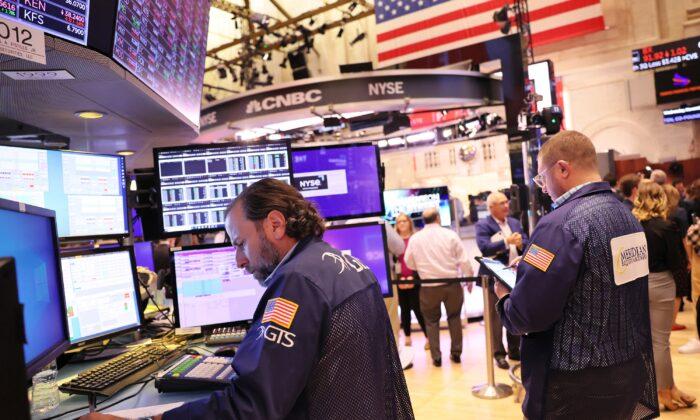Investment bank Goldman Sachs raised the odds that the United States will enter a recession in the coming months, in part due to the Trump administration’s tariffs.
“The upgrade from our previous 20 percent estimate reflects our lower growth baseline,” the analysis said, citing a recent downward trend in “household and business confidence” as well as statements from White House officials that suggest a “greater willingness to tolerate near-term economic weakness” to pursue their economic agenda.
Goldman Sachs also increased its estimate that inflation will continue to rise and slashed its gross domestic product forecast to 1 percent. It also predicted that the Federal Reserve will lower its interest rates by three quarters of a percentage point this year.
“While sentiment has been a poor predictor [of] activity over the last few years, we are less dismissive of the recent decline because economic fundamentals are not as strong as in prior years,” Goldman Sachs stated.
The bank also expects that the average U.S. tariff rate will rise to 15 percentage points in 2025, or 5 percentage points higher than its previous forecast. It also predicts that President Donald Trump will announce on April 2 that average tariffs across all U.S. trading partners will be increased to 15 percent.
“Higher tariffs are likely to boost consumer prices,” it stated, lifting the personal consumption expenditures forecast by 0.5 percentage points, to 3.5 percent year over year.
A White House spokesman, in response to an The Epoch Times question on Monday about the Goldman Sachs report, said that “fearmongering” on the Trump administration’s “economic agenda isn’t going to change the fact that industry leaders have already made trillions in investment commitments to make in America.”
“Countries ranging from Vietnam to India to the UK have already begun to offer up trade concessions that would help level the playing field for American industries and workers. President Trump used tariffs to deliver historic job, wage, and economic growth with no inflation in his first term, and he’s set to restore American Greatness in his second term,” the spokesman, Kush Desai, added in a statement.
During the 2024 election campaign, Trump vowed to use tariffs broadly and has already implemented duties against a range of products being imported into the United States. Trump also placed 25 percent tariffs on Mexican and Canadian products, while raising tariffs on Chinese products to a similar degree.
Trump has promised to unveil a massive tariff plan on April 2, which he has dubbed “Liberation Day.” White House economics adviser Kevin Hassett recently told Fox Business that the administration’s focus will be on the 10 to 15 countries with the highest trade imbalances with the United States, though he did not list them.
“You'd start with all countries,” Trump told reporters aboard Air Force One on March 30. “Essentially all of the countries that we’re talking about.”
“The other tariffs are going to raise about $600 billion a year, about $6 trillion over a 10-year period, and we’re going to have tax cuts,” he said. “It’s the biggest tax cut in American history for the middle class, for the blue collar.”
Trump has said he views tariffs as a way of protecting the domestic economy from unfair global competition and a bargaining chip for better terms for the United States, including on immigration policy and border security.
In February, Trump signed a memorandum that directed U.S. trade officials to go country by country and put together a list of tailored countermeasures. Recently, he suggested he might scale back his reciprocal plans, perhaps imposing tariffs in some cases at lower rates than countries charge the United States.
During remarks at the Oval Office last week, Trump said that the tariffs going into effect on April 2 would be more “lenient than reciprocal.” That comment was made as he announced a 25 percent tariff on all cars and key auto components not manufactured in the United States.







